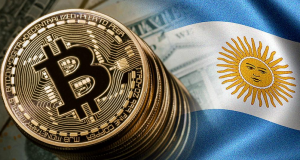Since we have all become inseparable from our smartphones, the market for mobile apps has grown into a behemoth. More than 178 billion apps were downloaded in 2017, with this number expected to grow to nearly 260 billion within the next four years.
Within the app market, there is a voracious consumer appetite for mobile gaming. In January alone, the top ten game publishers received over 185 million downloads. In 2018, mobile gaming is expected to take more than half of the revenue of the global market in gaming, bringing in $70.3 billion.
Mobile gaming has sustained double-digit growth every year since the first iPhone was released. The industry shows no signs of slowing.
The Rise of In-App Advertising
Aside from paid downloads, one of the ways that mobile gaming generates its revenues is through in-app advertisements. Due to the meteoric rise in app downloads, there has been a shift in the advertising market, with brands increasingly turning to in-app advertising. In-app advertising now shows better click-through and conversion rates compared to advertising on websites.
However, game publishers often find that they have to walk a fine line in ensuring user engagement when they are serving ads alongside gameplay. Too many ads, the wrong kind of ads, or ads that interrupt the gaming experience cause users to become disengaged. This can be a challenge in a crowded market, as there is always another game to be downloaded.
There is one tactic that proves effective in ensuring that users will remain engaged in apps using advertisements—the use of rewards. One survey showed that two-thirds of US smartphone owners said that they were more likely to stay engaged through advertising if they were receiving some kind of a reward. This has led some game developers to provide in-app rewards to unlock hidden levels or make faster progress, in return for time spent viewing ads.
However, such rewards have limited value when they are only redeemable within that specific game. If a user stops playing for a while, the prospect of unspent rewards is unlikely to lure them back in.
Digital Tokens for Transferable Rewards
Blockchain-based ad servers can provide a solution to the problem of non-transferable rewards. With digital tokens on the blockchain, it is possible to provide users with rewards that have lasting value.
A user can have their own digital wallet that gets topped up with tokens each time they view in-app ads. They can then redeem these tokens across different apps on the blockchain network. In this way, the tokens have a higher value to the user than rewards given in a single app.
Zinc is a blockchain company building a platform based around this user reward model. The Zinc platform will not only offer users the opportunity to receive rewards for their attention to advertisements but also puts full control of ad viewing into the hands of the user.
With ZINC tokens, a user could watch ads to earn tokens in one app and spend them on eliminating ads in a different app. They can also unlock premium features or in-app experiences with their ZINC tokens.
Imagine having Epic Games, Fortnite's creator, collaborate with ZINC on its blockchain network and allow its gamers to buy skins, emotes and more – just by watching advertisements.
Broader Benefits
Blockchain offers other benefits to users, publishers, and advertisers. It is common to see browsing history reflected in targeted adverts that are served across different apps and websites. Due to the prevalence of targeted ads, users are now becoming savvy to the fact that their personal data is harvested and shared across platforms. With a blockchain-based platform, users can provide their explicit consent to targeted advertisements, making them feel less invasive.
A more engaged user base means that game publishers have the opportunity to earn higher ad revenues than today, where ads are served up to a more passive audience. Once a user has built up tokens in their digital wallet, publishers are more likely to see retention rates increase across different games in their portfolio.
Optimizing Advertising Efficacy
Advertisers can also benefit from blockchain. The advertising supply chain is often long and complicated, involving multiple handoffs, with spend flowing in one direction and user data flowing in the other. By the point that user data reaches the advertiser, it can be of poor quality, leading to the inefficient spending of advertising budgets.
A further problem for advertisers is fraud, where false clicks or views are recorded in an attempt to squeeze more revenue from individual ads. This creates a vast amount of wasted spend in advertising budgets.
Using a blockchain-based system, all data including user details, clicks, and views are stored transparently and permanently on the blockchain. Fraudulent clicks are reduced or eliminated, and user data is guaranteed to be of high quality. Blockchain platforms can, therefore, offer an enhanced return on investment for brands investing in digital advertising.
Besides Zinc, other blockchain projects are also creating digital advertising platforms. However, whereas others are designing their own browsers and operating systems that users, publishers, and advertisers will be bound to sign up to, Zinc is building a platform that integrates seamlessly with the advertising infrastructure in place today.
Should In-App Advertisers Prioritize Blockchain?
The use of blockchain for in-app advertising shows excellent potential to tap into the significant growth in the mobile gaming and app markets. It is surely only a matter of time before users will come to expect that if they are giving their attention to adverts served in apps, they will be handsomely rewarded for the value they are providing.
 You, Me, and BTC Your Liberty & Bitcoin Podcast
You, Me, and BTC Your Liberty & Bitcoin Podcast







